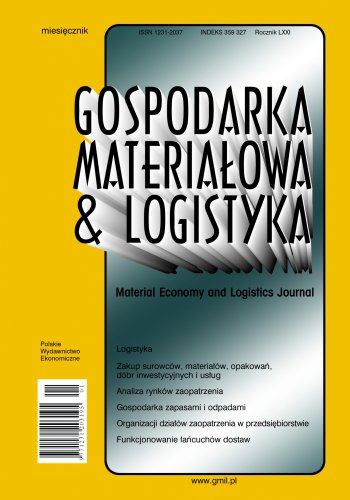Building intra-organizational ties in the opinion of companies from automobile industry
Nowadays, companies have to try to create adaptive network
structures to survive on a competitive market. There is a
number of studies confirming the benefits of a collaborative
approach within supply chains. At the same time, most
companies have difficulties in building such supply chains.
This is particularly true for small and medium-sized
companies. The article addresses the subject of inter-
organizational relations and the assessment of selected
elements of cooperation among companies in the automotive
industry. Selected factors shaping relationships in chains in
the opinion of entrepreneurs are presented.
References
Cao, Mei & Zhang, Qingyu. (2011). Supply Chain Collaboration: Impact on Collaborative Advantage and Firm Performance. Journal of
Operations Management, 29, s. 163–180.
Chen, I. J., Paulraj, A., (2004). Towards a theory of supply chain management: the constructs and measurements. Journal of Operations
Management, 22, s. 119–150.
Dyer, J. H., Singh, H., (1998). The relational view: cooperative strategy and sources of interorganizational competitive advantage. Acade-
my of Management Review, 23(4), s. 660–679.
Fawcett, S. E., Fawcett, A. M., Watson, B. J., & Magnan, G. M. (2012). Peeking inside the black box: Toward an understanding of supply
chain collaboration dynamics. Journal of Supply Chain Management, 48(1), s. 44–72.
Fedorowicz, J., & Ghosh, A. (2008). The role of trust in supply chain governance. Business Process Management Journal, 14(4), s. 453–470.
https://doi.org/10.1108/.
Fliedner, G. (2003). CPFR: An emerging supply chain tool. Industrial Management and Data Systems, 103(1–2), s. 14–21.
Hausman, A., & Johnston, W. J. (2010). The impact of coercive and non-coercive forms of influence on trust, commitment, and complian-
ce in supply chains. Industrial Marketing Management, 39, s. 519–526.
Kampstra, R. P., Ashayeri, J., and Gattorna, J. L. (2006). Realities of supply chain collaboration. International Journal of Logistics Mana-
gement, 17(3), s. 312–330.
Katkalo, V. S., Pitelis, C. N., & Teece, D. J. (2010). Introduction: On the nature and scope of dynamic capabilities. Industrial & Corpora-
te Change, 19(4), s. 1175–1186.
Saban, K. & Mawhinney, J. R. & Drake, M. J., (2017). An integrated approach to managing extended supply chain networks, Business Ho-
rizons, 60(5), s. 689–697.
Simatupang, T. M., Sridharan, R., (2005). An Integrative framework for supply chain collaboration. International Journal of Logistics Ma-
nagement 16(2), s. 257–274.
Soosay, C., Hyland, P., Ferrer, M., (2008). Supply chain collaboration: capabilities for continuous innovation. Supply Chain Manag. 13(2),
s. 160–169.
Tan, K. C., Lyman, S. B., & Wisner, J. D. (2002). Supply chain management: A strategic perspective. International Journal of Operations
& Production Management, 22(6), s. 614–631.
Tan, K. H., Wong, W. P., & Chung, L. (2016). Information and knowledge leakage in supply chain. Information Systems Frontiers, 18,
s. 621–638.
Vázquez, R., Iglesias, V., & Álvarez-González, L. I. (2005). Distribution channel relationships: The conditions and strategic outcomes of
cooperation between manufacturer and distributor. International Review of Retail, Distribution, and Consumer Research, 15(2),
s. 125–150.
Wierzbiński B., (2019). Zasoby niematerialne w procesie tworzenia przewag konkurencyjnych małych i średnich przedsiębiorstw przygranicz-
nych, Rzeszów: Wydawnictwo Uniwersytetu Rzeszowskiego.

